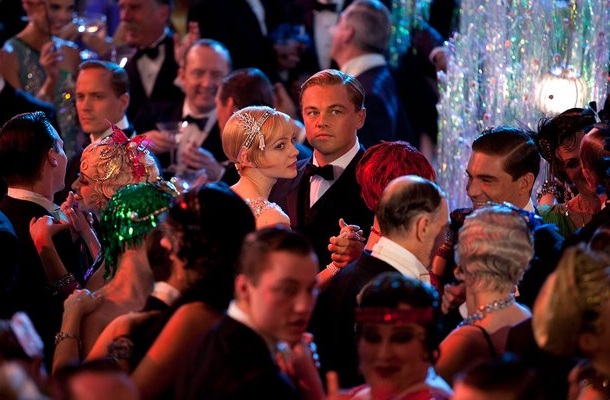
“The Great Gatsby” — a film review by Gary Chew
The most salient point in F. Scott Fitzgerald‘s great novel The Great Gatsby comes when Nick Carraway admonishes Jay Gatsby: “You can’t repeat the past.”
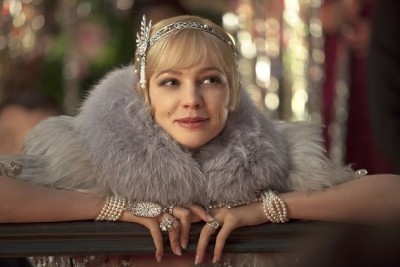
Making sure to abide by that admonition had to be what Baz Luhrmann was up to when he co-wrote and directed the Fitzgerald classic now opening across the nation. Although the story takes place as the twenties roared, this “Gatsby” has much that makes it seem as though it’s really 2013 and a grand, splashy embellishment of “Gatsbys” of the past — that cannot be repeated.
That’s because of the film’s visual effects of recent vintage. Not only are the lavish parties thrown by Gatsby and the entire film in 3D, but Luhrmann’s parade of spectacle-engorged scenes with sets, effects, costumes and crowds seem never to cease. He didn’t pull out the stops as far as they’ll go when making the picture; he threw them away.
Ironically, with all the stuff Luhrmann has so cleverly created for us to see, I caught 3 or 4 jump cuts in the film … not glaringly obvious, but I did especially see DiCaprio suddenly be in a different position from one split second to the next when the camera angle changes but the same scene moves forward.
Watching the film so closely, for those reasons, I came out of the screening with a bit of a headache. If you’ve seen Luhrmann’s earlier, well-received film, “Moulin Rouge,” there must be a notion in your head about what this Australian filmmaker has done for and, mostly, to the fabricated East and West Egg, Long Island, where the narrative is mostly set.
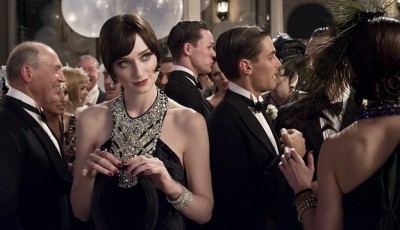
I would like to think that if Fitzgerald saw all the films and TV shows that draw from his iconic novel, he might think Luhrmann has gone a little overboard with the jazzy, tragic story of urbane elitists who hover even higher than mere bourgeois Americans … not long before the crash of ’29.
Should you not yet know, marital infidelity is the vehicle by which “Gatsby” is told. Gatsby (Leonardo DiCaprio) is obsessively in love with Daisy (Carey Mulligan), who is married to Tom (Joel Edgerton). Nick (Tobey Maguire) rents the modest cottage on Gatsby’s elaborate estate. Middle-class Nick is a cousin of the well-off Daisy. Gatsby persuades Nick to cover for him and act as go-between for his covert resumption of the love affair with Daisy that ended five years earlier when Gatsby left for World War I and Daisy had yet to meet then marry Tom.
Tom is also having an illicit liaison with a poor man’s wife, which allows Fitzgerald to invest his story with some of the plight of lower-class Americans and minorities.
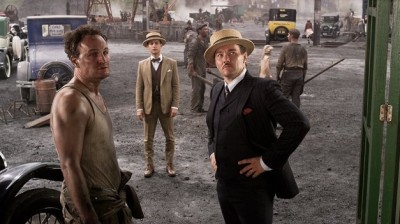
The film is not sexy … or maybe I should say that Luhrmann hasn’t made it sexy. In that regard, the script is as Fitzgerald intended.
The casting is fine. As with the “Gatsby” of Robert Redford, the character of Jordan Baker (Elizabeth Debicki), fetches and intrigues. I prefer Mulligan as Daisy to Mia Farrow’s turn in that role with Redford. Tobey Maguire is slightly goofy as Nick. Sam Waterston’s “Nick” is hard to beat in the tamer big “Gatsby” production of the early ‘70s. Edgerton as Tom is appropriately menacing but again, Bruce Dern will be, for me, the better actor playing Daisy’s coarse, arrogant spouse.
DiCaprio has turned in one of his pretty good performances for this. He seems as upper-class as Redford did, and more outwardly emotional in the lead.
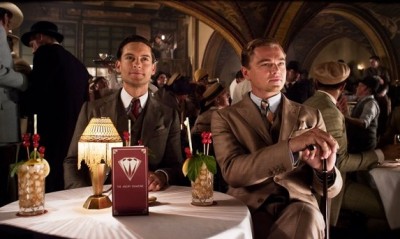
My difficulty also lies with part of the story of “The Great Gatsby.” Even though I think Fitzgerald’s novel is superlative. However … the stretch of the ritzy hotel room confrontation between Gatsby and Tom has always struck me as ringing not so true. Both men are vying to ultimately possess Daisy. Their verbal exchanges come off a bit silly sounding and uncharacteristic of powerful, wealthy gentlemen who control lots of people and things. There seems to be nothing clever of either in the stand-off.
Luhrmann’s take on the penthouse row in the summer heat high above New York City doesn’t delete the silliness of the scene, which also lasts too long.
Since one of the novel’s greatest strengths is the author’s on-the-page turn of phrase, what’s best about “The Great Gatsby” available for translation to the screen that also remains, is the deep sense of tragedy and the obvious fact that money … and as George Carlin would put it, “stuff,” most likely, by themselves, won’t bring happiness to those who have leisure, comfort and opulence “to the nines.”
With five as tops, this old sport gives “The Great Gatsby” — vintage 2013 — an insubstantial a three.
- Movie Review: ‘The Glorias’ - September 28, 2020
- Movie Review: ‘I’m Thinking of Ending Things’ - September 10, 2020
- Movie Review: ‘The Burnt Orange Heresy’ - August 31, 2020

